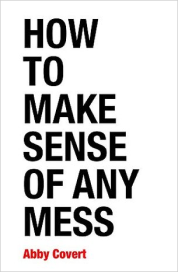How to start in UX

The
Ultimate
Guide
With
All The
Secrets
You Will
Need To Know
Become
To
A Fabulous
Design
Unicorn
Scratch that... There are no magic formulas in design. But if you are looking for guidance, here's a starting point.
A free, self-guided class to help you take your first steps into digital product design.
With all the great content available online (plus a bit of discipline), we believe you should be able to learn the basics of our profession before investing in cost-prohibitive more formal education and training. Read more

Open knowledge sharing can democratize design—ultimately making our industry more inclusive and culturally rich. This guide is only possible thanks to some amazing designers and leaders who have been thoughtfully sharing their experience and knowledge over the years.
Jakob Nielsen
Vivianne Castillo
Koos Looijesteijn
Christina Wodtke
Rubens Cantuni
Reena Merchant
Tatiana Mac
Chris Kiess
Bobby Ghoshal
Jared Erondu
Tanner Christensen
Tony Fadell
Don Norman
John O’Nolan
Lo Min Ming
Alexis Collado
Ryan Quintal
William Channer
Timothy Achumba
Iheanyi Ekechukwu
Sanjana Galgalikar
Paula Scher
Aga Szóstek
Maximilian Schmidt
Maggie Gram
Cassie McDaniel
Stuart Silverstein
Cyd Harrell
Isabelle Yisak
Tiffani Ashley Bell
Pablo Stanley
Ruben Pater
Linnéa Strid
Nic Chan
Ellen Ward
Máirín Murray
Thelma Golden
Jen Cardello
Andy Fitzgerald
Jorge Arango
Lucia Wang
Abby Covert
Sheena Iyengar
Thom Mayne
Matt Lavoie
Quintin Carlson
Tatiana Vlahovic
Mallory Kim
Nikki Anderson
Tony Fadell
David Kelley
Michelle Chiu
Pascal Potvin
Jonny Czar
Jon Yablonski
Taras Skytskyi
Erik Johnson
Kathy Brew
Roberto Guerra
Val Head
Meghan Wenzel
Lillian Ayla Ersoy
Erik Johnson
Diana Malewicz
And many more
Curated by Caio Braga and Fabricio Teixeira, edited by Deanna Horton. Special thanks to Michela Picchi for the illustrations. Made by the UX Collective.
This is our first iteration of the guide; if you have thoughts, suggestions, links, and ideas: hello@uxdesign.cc

Not a bootcamp.
There won’t be a design job waiting for you at the end of this guide. The question we want you to answer is: Is UX, as a career, what I'm interested in?
Not one of those “free” e-books.
We are not trying to sell you software licenses or capture your email address to spam you after you download a PDF. It's all publicly available.
Not a 5-step tutorial.
We’re not offering "How To Create Personas In 5 Simple Steps" tutorials. Instead, we want to show you the methods you can use as a designer and help you think critically about when to use them.
How it's structured
The goal of this guide is to un-complicate design and eliminate the jargon. Read it at your own pace—by yourself, with a friend, one chapter a week, or all at once. Each chapter is structured like this:
Lesson
A brief introduction to the topic and why it’s important to you as a designer.
Reading list
A list of articles available online—for free—that will give you a deeper understanding of each concept introduced in the class.
Watchlist
Inspirational talks and documentaries to watch between classes.
Reflection
Questions to get you thinking about how each concept applies to you.
Practice
Exercises you can do to apply the concepts you learned.
What's included
1
2
3
CHAPTER 1
Why design?
Why now?
CHAPTER 2
Industry
overview
CHAPTER 3
Design with
capital D
4
52
6
CHAPTER 4
Purpose &
community
CHAPTER 5
The architecture
of information
CHAPTER 6
Talking
to users
7
8
9
CHAPTER 7
Balancing form
& function
CHAPTER 8
The job of a designer
CHAPTER 9
















